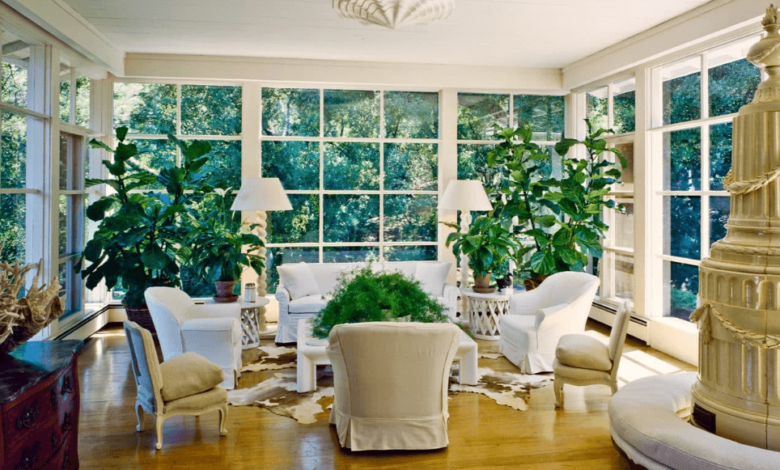The Silent Stars: How Furniture Shapes Cinematic Storytelling

When we watch our favorite films, we’re drawn into worlds crafted by directors, cinematographers, and production designers who understand that every element on screen tells a story. While we follow the protagonists and their journeys, there’s an entire cast of silent performers working tirelessly in the background, the furniture. These carefully chosen pieces don’t just fill space; they reveal character, establish mood, and transport audiences into believable worlds that feel authentically lived-in.
Setting the Scene Through Design
Consider the stark, minimalist apartment in “Her” where Theodore navigates his loneliness, or the opulent, maximalist mansion in “The Great Gatsby” that screams new money desperation. These aren’t accidents of set decoration, they’re deliberate choices that communicate volumes about the characters who inhabit these spaces. The furniture becomes a visual language that speaks before any dialogue is exchanged.
In period films, furniture carries the additional burden of historical accuracy while serving the narrative. The ornate Victorian pieces in “Little Women” don’t just establish the time period; they reflect the March family’s genteel poverty and aspirational middle-class values. Each worn velvet chair and hand-me-down table tells us about their financial struggles and their determination to maintain dignity despite hardship.
Modern films face different challenges. Contemporary stories require furniture that feels current yet timeless enough not to date the film. This is where the expertise of production designers shines, particularly when they source pieces that audiences can envision in their own homes. The growing appreciation for designer furniture Perth and other major cities reflects how cinema influences real-world interior design trends.
See also: How to Prepare Your Home for Sale
Character Development Through Objects
Furniture choices reveal character psychology in ways that exposition never could. A character surrounded by sleek, expensive pieces might be compensating for insecurity, while someone with carefully curated vintage finds could be a romantic with an appreciation for history. The bachelor pad filled with designer furniture tells us about someone’s priorities, success, and perhaps their loneliness, often all without a single line of dialogue.
Take the iconic red leather chair in “Frasier”, it wasn’t just a prop but a character in itself, representing Martin Crane’s working-class practicality clashing with his sons’ refined sensibilities. The chair became so integral to the show’s identity that it’s now displayed in the Smithsonian. This demonstrates how furniture transcends mere decoration to become part of popular culture’s representation.
The Psychology of Space
Filmmakers understand that audiences read environments instinctively. A cluttered, mismatched living room suggests chaos or financial struggle, while sparse, perfectly arranged spaces might indicate obsessive control or emotional detachment. The challenge lies in making these spaces feel authentic rather than overly staged.
This authenticity is why many production designers now source from actual furniture stores rather than relying solely on prop houses. When audiences see pieces they recognize or could purchase themselves, it creates an immediate connection. The sophisticated interiors featuring designer furniture Perth residents might choose for their own homes help ground fantastic storylines in relatable reality.
Influencing Real-World Design
The relationship between cinema and interior design flows both ways. Films showcase trends and inspire home decorators, while furniture designers often find their pieces elevated to iconic status through strategic placement in memorable scenes. The mid-century modern revival owes much to its prominent features in films and television shows that celebrated sleek, optimized living.
At Luxe Decorum, we often see clients bringing in screenshots from films, asking to recreate specific looks or moods. This crossover between cinematic inspiration and real-world application demonstrates furniture’s power to tell stories beyond the screen.
The Technical Artistry
Behind every perfectly furnished movie set lies meticulous planning. Production designers must consider camera angles, lighting requirements, and practical needs like actor movement while maintaining visual storytelling integrity. Furniture must look beautiful on camera while serving technical requirements, a much more complex challenge than typical interior design.
The color palette, scale, and style of every piece must work harmoniously while supporting the narrative arc. A character’s journey might be reflected in their evolving relationship with their environment, requiring furniture that can adapt to different emotional beats throughout the story.
Beyond Decoration
Understanding furniture’s role in filmmaking helps us appreciate how thoughtfully chosen pieces can transform any space into a story-telling environment. Furnishing a home or simply watching your next movie, remember that every chair, table, and lamp has been selected to communicate something specific about the people who live among them.
At Luxe Decorum, we believe your home deserves the same thoughtful curation that captivates audiences on the silver screen. Every piece in our designer furniture Perth collection is chosen not just for its beauty, but for its ability to tell your story. From statement pieces that command attention to subtle accents that add depth and character, we help you create spaces that are as compelling as any movie set.
Ready to transform your space into your cinematic masterpiece? Visit us today and discover how the right designer furniture Perth can make you the star of your own story. Your home’s next chapter begins with a single, perfectly chosen piece.



